

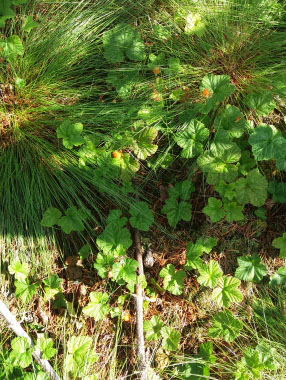
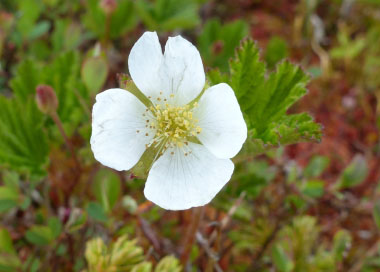

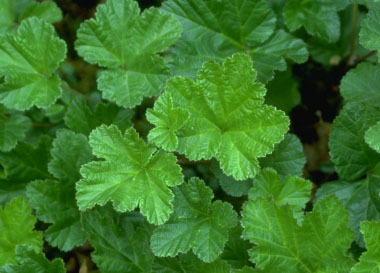

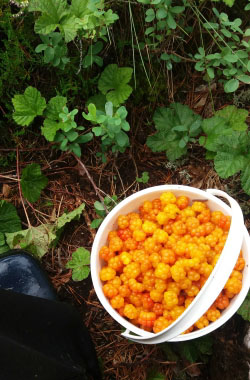
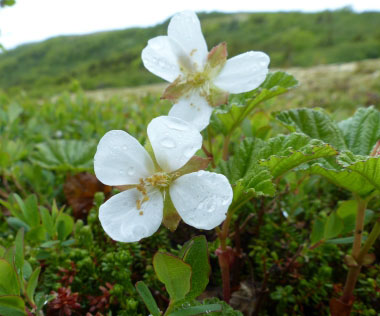

To support our efforts please browse our store (books with health benefits, etc.).
Cloudberries are in the rose family and are a low perennial forb. They are typically known as bakeapples in Newfoundland and Labrador. This berry grows almost exclusively in circumpolar regions and is prized in cultures and cuisines in Scandinavia, Russia, Canada and throughout Alaska. Cloudberry’s berry production varies a lot over the years. Frost during the flowering time can ruin the whole crop and cool weather immobilizes pollinators. Heavy rains and storms can rip the delicate petals in a way that pollinators cannot find the flowers. Bad weather during the growing season shows up the next summer too in the shape of a poor inflorescence.
Distinguishing Features
This plant spreads by creeping rhizomes and they grow close to the ground. The cloudberry plant produces only a single berry on each stem. The fruit is an aggregate with only a few drupelets. They ripen from yellow-pink and reach 2 cm across. Fruit is borne singly on a mostly upright stem. The fruit turns from red to an attractive yellow-amber colour when ripe.
Flowers
The flowers are unisexual, solitary, terminal, 2 to 3 cm wide, with male and female flowers borne on separate plants. The calyx is deeply divided into 5 to 8 oblong-ovate lobes, with short, abruptly pointed tips. The calyx is persistent in the fruit; there are 5 to 8 petals, white, obovate; male flowers with numerous stamens; female flowers with several, distinct pistils. Flowers bloom in mid-summer.
 Fields
of Nutrition has medicinal benefits and vitamin/mineral content of Cloudberry.
Fields
of Nutrition has medicinal benefits and vitamin/mineral content of Cloudberry.
Leaves
There are 1 to 3 leaves per plant, alternate, simple, palmately-veined, stalked (petiolate), deciduous. Leaves are kidney-shaped to round, measuring 4 to 11 cm wide, with 5 to 7 broadly ovate to rounded lobes; leaf base cordate. Leaf margins are toothed, crinkled and often also wrinkled. The underside is hairy with yellow glands. The leaf petioles are somewhat hairy.
Height
This plant grows 10 to 25 cm (4 to 8”).
Habitat
Cloudberries are found in bogs, wet peaty meadows, and in tundra regions. It is native to the northern boreal and arctic regions of North America and Eurasia. They also like swamps, mossy open bogs, slightly elevated dryer ridges on string bogs, peaty moors and rocky outcrops.
Edible Parts
The juicy fruit of the cloudberry is edible. Cloudberry is an ingredient in many desserts, jams, confections and alcoholic beverages. Cloudberry is dominantly used in traditional Scandinavian cuisine, although it also appears in Inuit cuisine. Historical documents reveal that cloudberry was utilized by Norwegian sailors and North American Eskimos to prevent and treat scurvy; its roots and leaves were used for medicinal purposes. (Cloudberries have a high vitamin C content.)
Other Name
Bakeapple.
Similar Plants
Arctic Bramble.
Thank-you to Päivi Lehtonen, my Instagram friend in Finland for providing the images of ripe cloudberries. Her website is: www.perinnepata.fi and you can follow her on Instagram: @Perinnepata.
Winter Survival Food Handbook

PDF Plant Magazines
Types of Wild Food
Geographic Zones Seasons
Disclaimer
EdibleWildFood.com is informational in nature. While we strive to be 100% accurate, it is solely up to the reader to ensure proper plant identification. Some wild plants are poisonous or can have serious adverse health effects.
We are not health professionals, medical doctors, nor are we nutritionists. It is up to the reader to verify nutritional information and health benefits with qualified professionals for all edible plants listed in this web site. Please click here for more information.
Why Edible Wild Food?
- Food costs are rising
- Free, wild food is readily abundant
- Wild food adds nutrition to your diet
- Wild food can help treat various medical conditions





